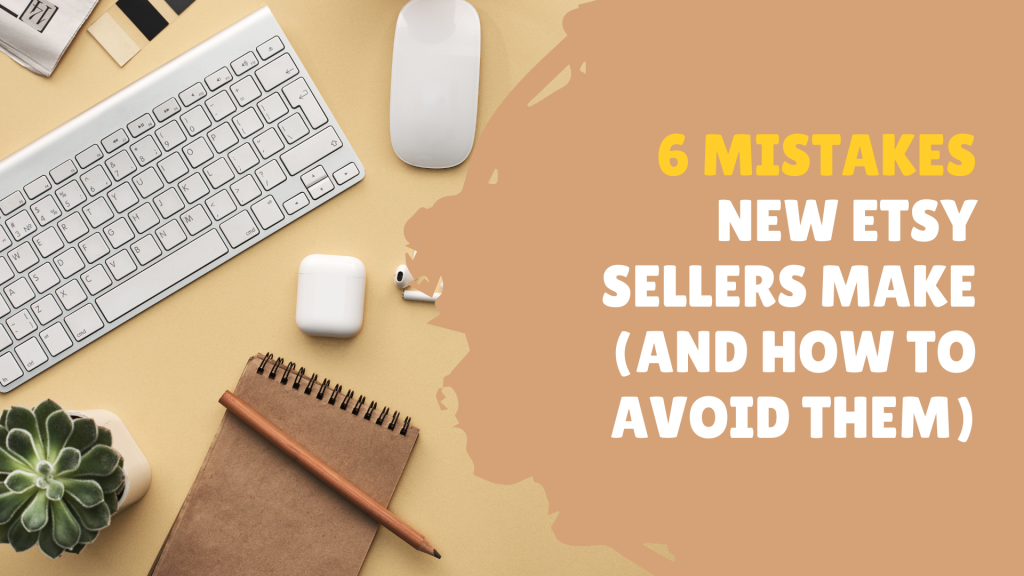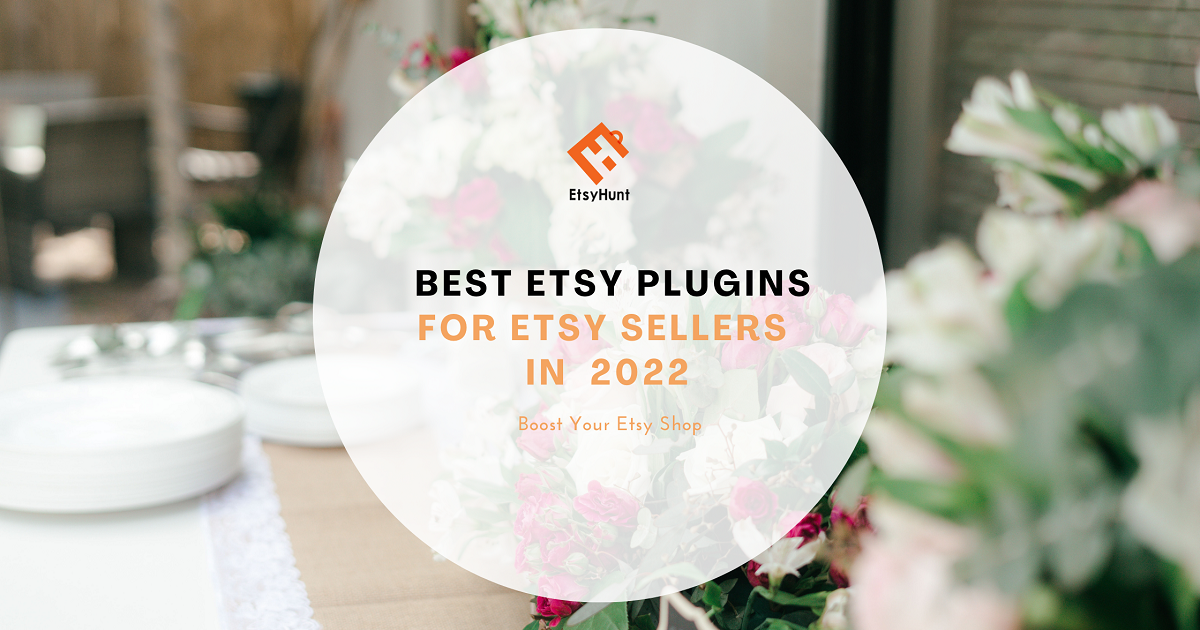6 Mistakes New Etsy Sellers Make (And How To Avoid Them)

Starting a business on Etsy can be a major venture.
It involves taking good product photos, marketing your handmade items to your target customers, and managing your shop.
With everything you need to do before opening your Etsy shop, it’s easy to feel overwhelmed and make mistakes.
Many Etsy beginners make mistakes. It’s normal.
However, to survive and thrive as an Etsy seller, you must learn to navigate challenges and avoid common selling mistakes.
If you’re considering starting a business on Etsy, avoid these six mistakes new Etsy sellers often make.
Lack of a Clear Brand Identity
One of the biggest mistakes new Etsy sellers make is not developing a clear brand identity.
Your brand identity is what sets your store apart from the competition. It establishes trust, credibility, and an emotional connection with your customers.
Take the time and effort to research and define your brand before launching your Etsy store. Consider how you want people to perceive and remember your shop.
Creating a consistent brand identity is also essential.
Be consistent with the fonts, color palettes, logos, and packaging you use on your shop, social media pages, packaging, and anything else representing your brand.
These elements should work harmoniously to communicate your business's goals and values.
However, you must be patient because building a strong brand identity is an ongoing process. It takes time to build a brand, and successful Etsy sellers with thousands of sales monthly didn’t start that way.
Listen to your customers and refine your approach over time, but always stay true to your brand's original purpose and goals.
Posting Low-Quality Listing Photos
The quality of product photos on your Etsy store plays a significant role in capturing customer interest.
Low-quality photos can deter potential buyers, even if they’re actively searching for the product you sell.
Poorly captured product images can also affect the buyer’s perception of your brand and its legitimacy. People who see your low-quality listing photos will likely think your store is unreliable and untrustworthy.
Conversely, high-quality photos attract attention, generate interest, and leave a positive first impression.
Customers who see well-executed and professional-looking photos are more likely to perceive your brand and store as legitimate and trustworthy. The more high-quality pictures they see, the more they trust your business.
Only post high-quality photos, and avoid dark, blurry, and grainy images at all costs.
If your budget permits, consider hiring a professional product photographer.
If paying for professional photography isn’t financially feasible, invest in a point-and-shoot camera with at least 10 megapixels or a smartphone with a good-quality camera and experiment with photography.
You can find many photography tutorials for beginners on YouTube.
Neglecting SEO
In today's competitive marketplace, simply uploading products on Etsy and relying on word-of-mouth isn't enough to attract customers.
To ensure your listings reach your target audience, Etsy SEO should be your top priority.
SEO (Search Engine Optimization) involves using relevant terms that users will likely search for when looking for specific items.
For example, if you sell digital downloads, include keywords like "digital planner for project manager" or "E-birthday card for Dad" in your listing titles, descriptions, and tags to attract customers.
Having a basic understanding of SEO can significantly improve your rankings and visibility. You can use free or paid Etsy SEO tools to research keywords for your listings, tags, and product descriptions.
However, avoid overdoing your SEO by stuffing your listings with keywords.
Excessive optimization can negatively impact user experience, loading times, compatibility, and credibility. Use SEO wisely to create a positive experience for your customers
Skipping Social Media Marketing
Social media is a powerful tool for your Etsy business. Many people use social media to find products, so don’t miss out on this opportunity to increase traffic to your store.
Social media lets you connect with your target audience.
By sharing stories and customer reviews on your social media accounts, you can build trust, establish a relationship with your customers, and ultimately increase your conversion rate.
Determine which social media platforms your target audience prefers and regularly post reviews, photos, and interesting stories about your products. Doing so adds personality to your brand and helps customers get to know you better.
Customers who trust and learn more about your brand are more likely to recommend your store to others.
Don't overlook the impact of social media on your business. Utilize it effectively to drive traffic and boost sales for your Etsy store.
Not Using Etsy’s Marketing Tools
Many sellers don’t know that Etsy offers marketing tools to support Etsy businesses.
One valuable tool available is Etsy Ads, which lets you promote products within and outside the platform. Etsy Ads can help you reach your target audience and new audiences.
However, many sellers know these tools exist but don’t research and experiment with them.
Take the initiative to explore the various Etsy tools at your disposal.
You can also try using Etsy plugins or browser extensions that help with product research and tag analysis.
Remember, there isn't a one-size-fits-all solution. Trial and error is the key to finding the best tool for your business.
Take advantage of guides and step-by-step tutorials to expand your knowledge, then apply what you learn to build your Etsy startup.
By proactively exploring these resources, you can maximize the benefits of Etsy's marketing tools for your business.
Underpricing
Many new Etsy sellers underprice their products because they’re trying to attract more customers and increase sales.
However, this strategy often leads to more losses than gains.
Setting prices too low often raises doubts about the quality of your products among potential customers.
Instead of underpricing and selling items at a potential loss, conducting thorough research is the key to determining the right price for your products.
Start by calculating the cost of acquiring the products, and then choose a desired profit margin that aligns with your business goals, market conditions, and industry standards.
Conducting market research to understand your target audience's buying behavior, preferences, and willingness to pay is also crucial.
Determine how much your competitors charge for similar products. Then, test your pricing strategy and observe customer feedback.
Pricing your products isn’t a one-and-done deal. It requires ongoing analysis. Stay vigilant, monitor market trends, and adjust your pricing strategy as needed to remain competitive in the long run.
The Bottom Line
Building a successful Etsy business requires hard work, thorough research, and resilience.
Learn from the abovementioned mistakes, equip yourself with the right information, and plan your strategy accordingly.
If you make mistakes, see them as learning opportunities and move forward. The more effort you put in, the better your chances of growing your Etsy business.
Stay committed, keep improving, and embrace the journey to achieve success.



![20 Profitable Ideas for Etsy Black Friday Cyber Monday [BFCM] (2022)](https://zbase-global.zingfront.com/saasbox/resources/png/Etsy-Black-Friday-Cyber-Monday-1200x630__6f8c6c717e01af0bd666a88c715514a6__6f8c6c717e01af0bd666a88c715514a6.png)

